How is this bond proposal different from the sinking fund and past bonds?

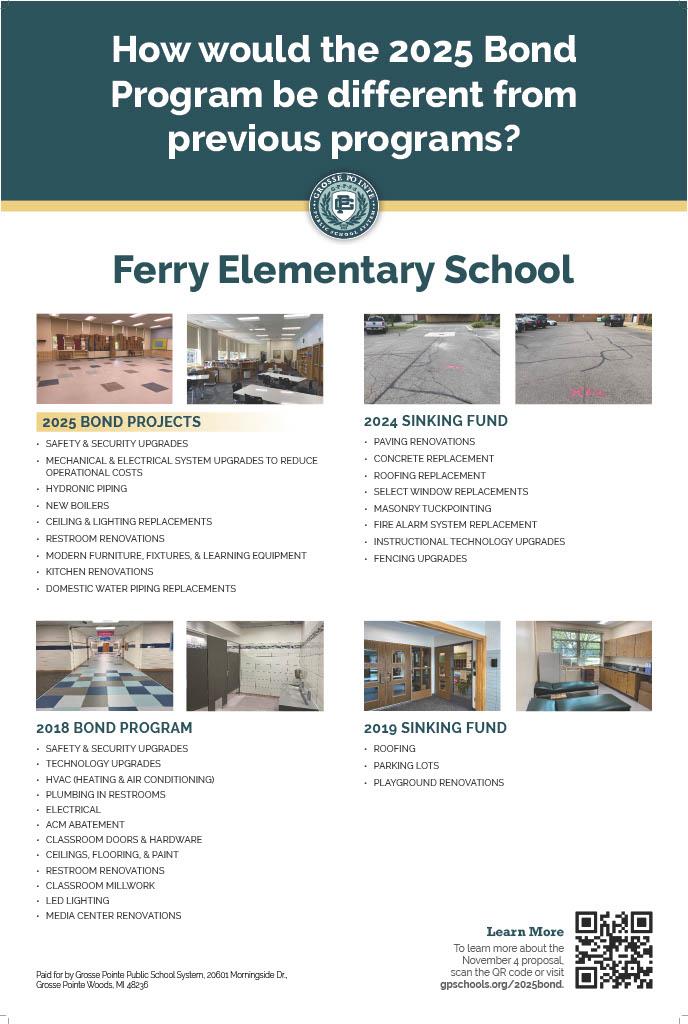
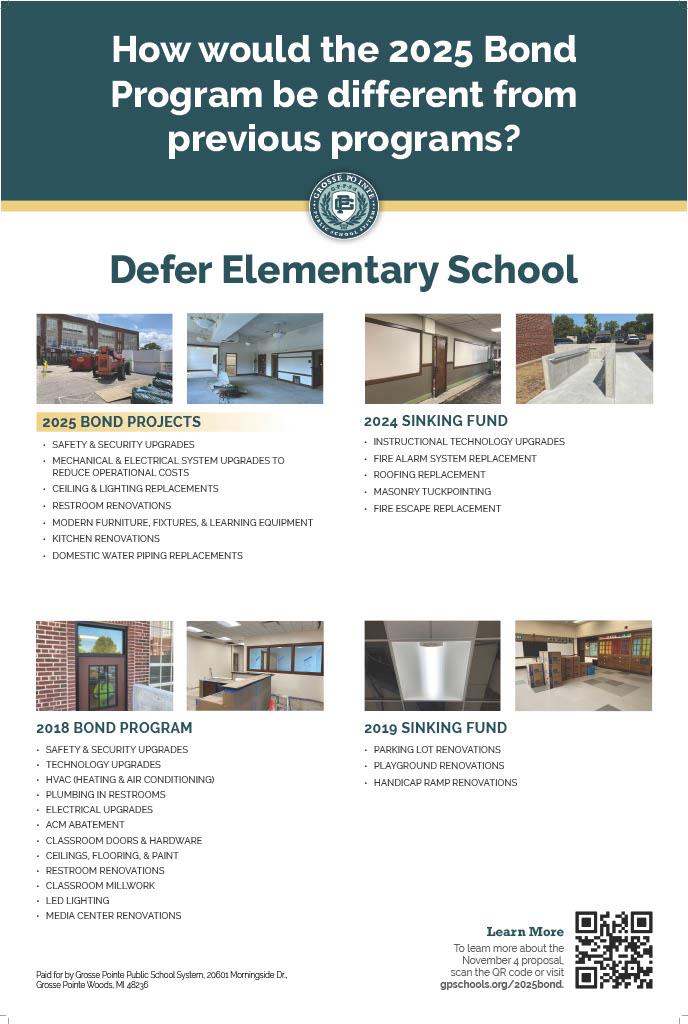
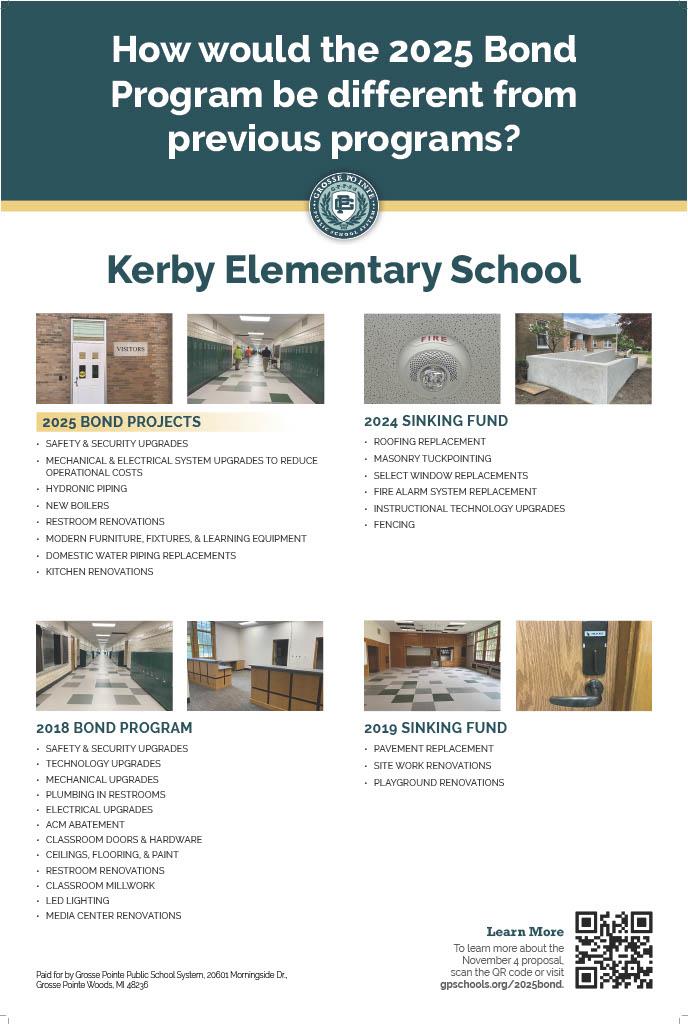

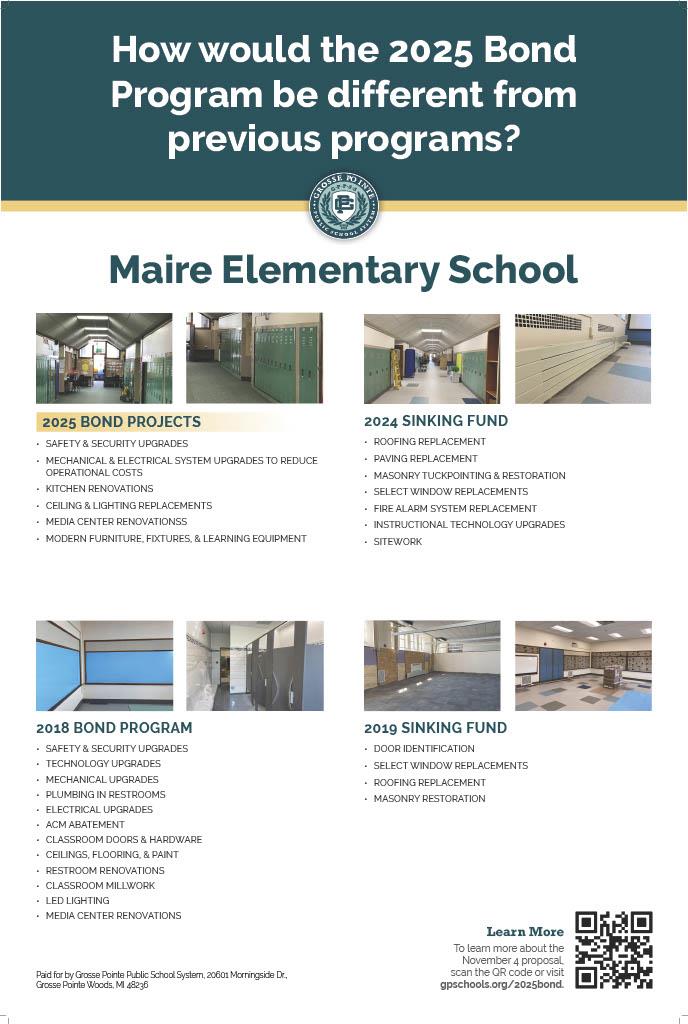
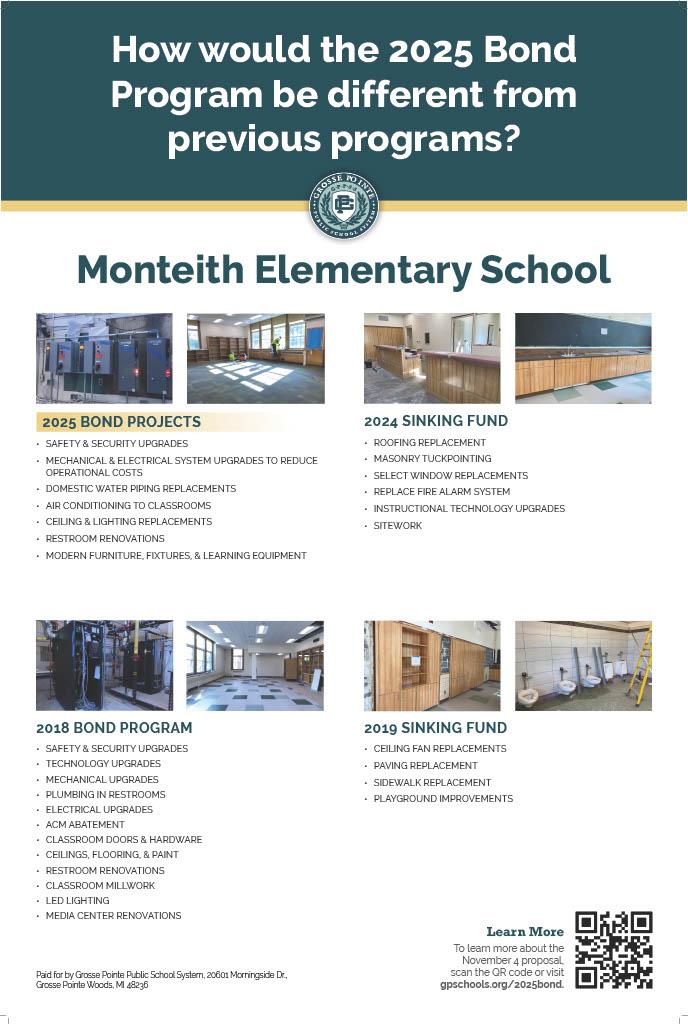
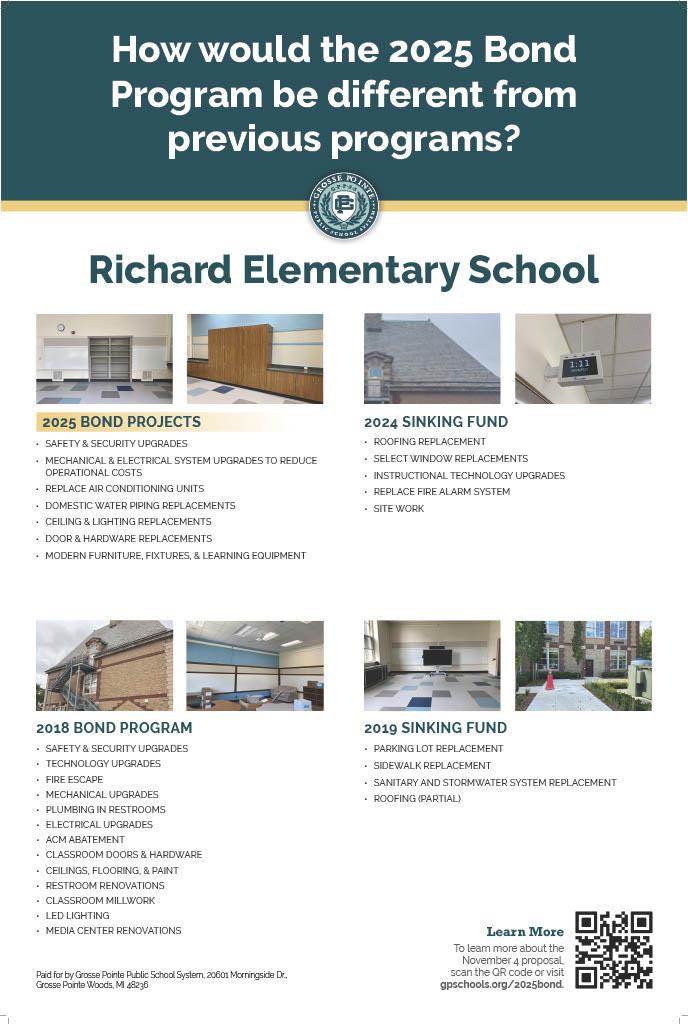
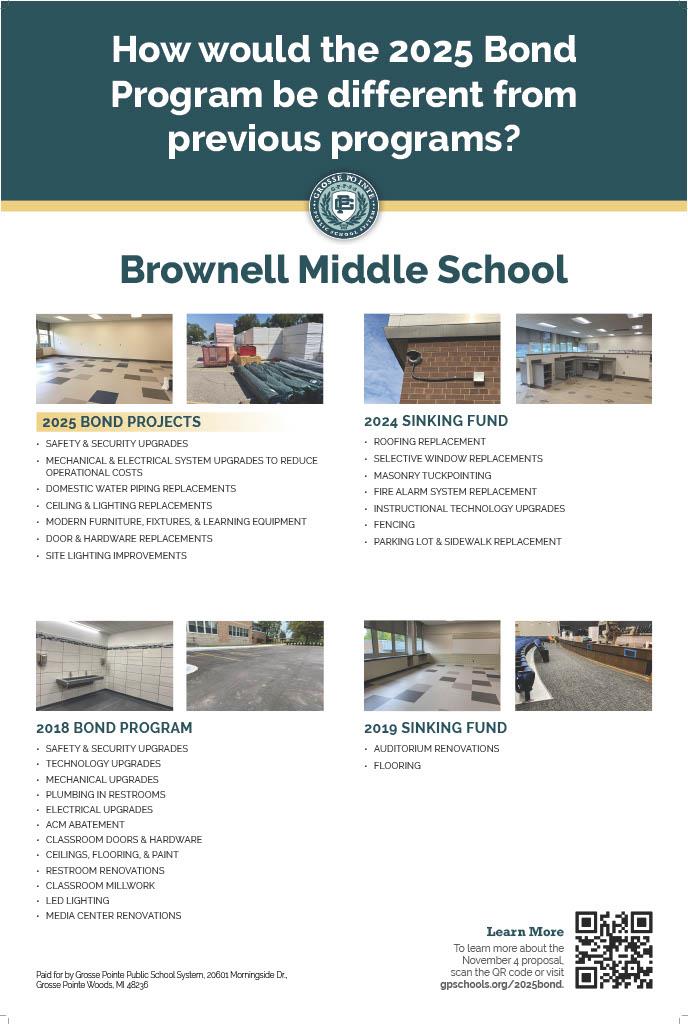

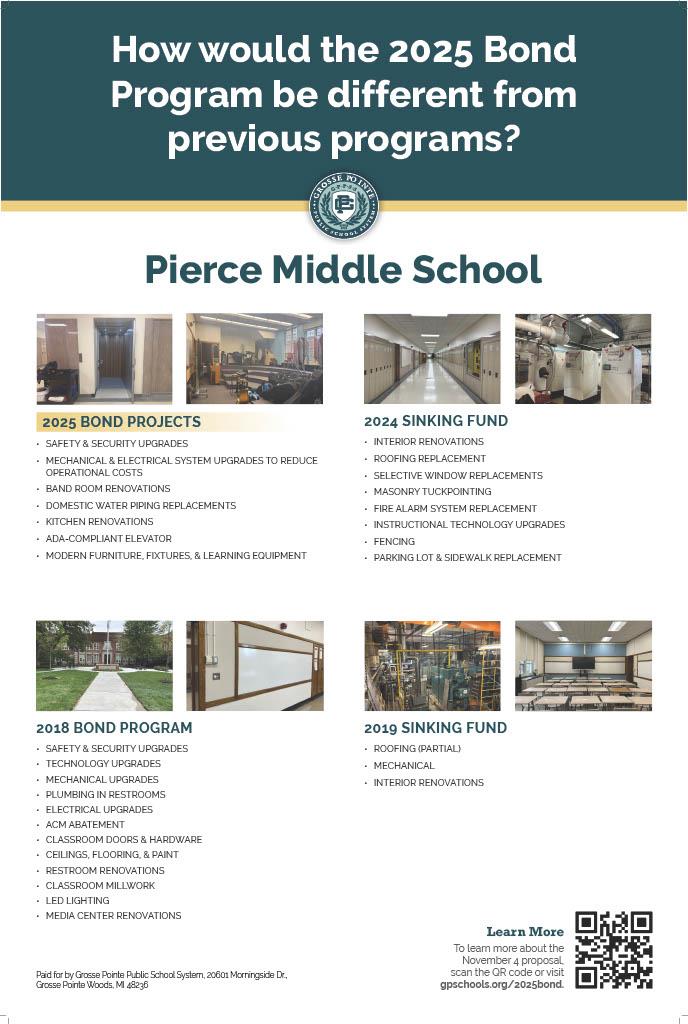
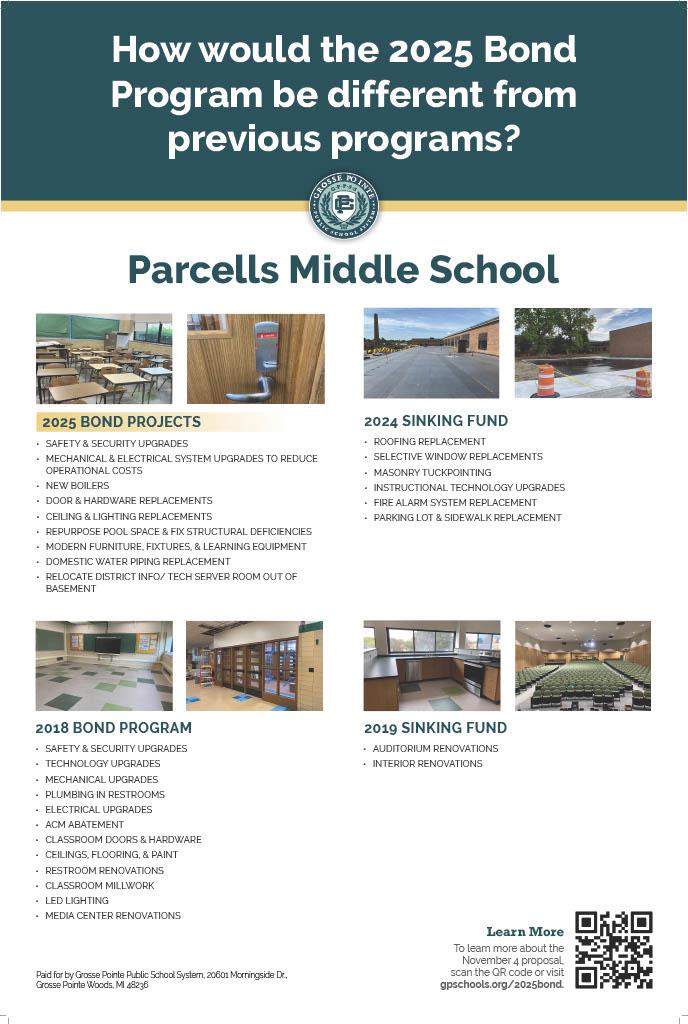
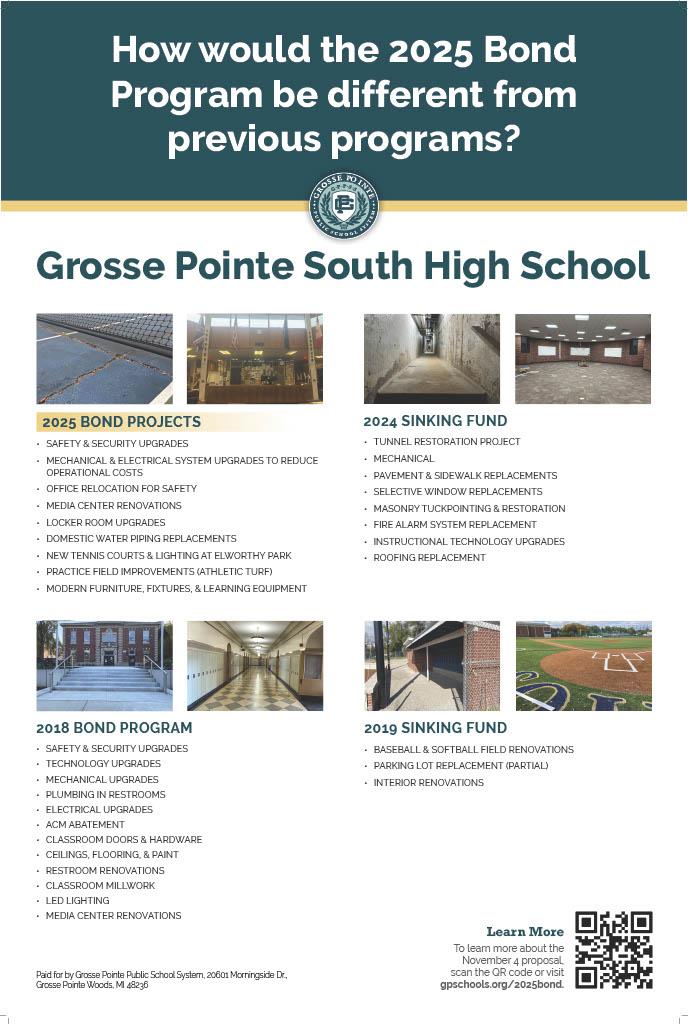
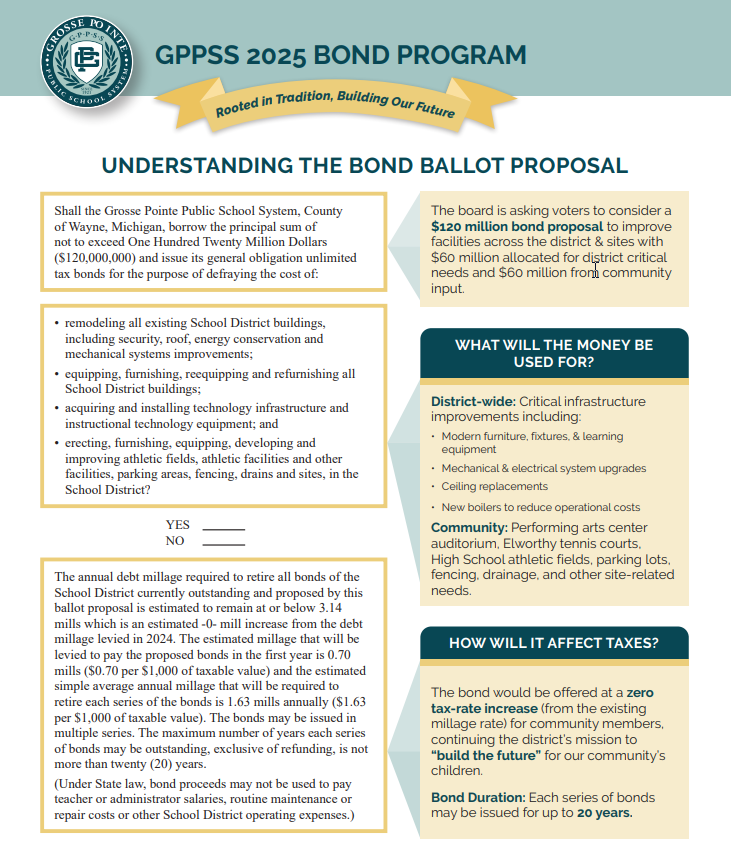
Frequently Asked Questions & Answers
-
We have often heard that the bond would come with a zero tax-rate increase. Can you explain how that works?
Through strong financial stewardship the District was able to lock in lower interest cost than anticipated on the 2018 bond proposition. The lower interest cost together with stronger taxable value growth allowed the District to structure the existing debt to provide a step down in the debt payments in 2025/2026 which allows the District to issue $120 million of new bonds without increasing the debt millage to taxpayers from what they currently pay. It is structured to remain at or below 3.14 which is still among the lowest of our peer districts.
-
What is on the November 4, 2025, ballot?
The Board of Education is asking voters to consider a $120 million bond proposal to improve facilities throughout the district. The bond would be offered at a zero tax-rate increase (from the existing millage rate) for community members, continuing the district’s mission to “build the future” for our community’s children.
-
How and why was this plan developed?
It’s time that our facilities matched the quality of our educational programming. We love our buildings, many of which are nationally designated historic sites. This bond would help preserve our history while providing comfortable, modern learning spaces for our students and teachers. Of the proposed $120 million bond, $60 million was identified by the district as critical needs.
GPPSS then invited the community to apply to serve on a bond advisory committee (BAC) to determine the remaining $60 million of projects. The BAC met four times throughout the spring of 2025. All of the materials provided to the BAC are available here:
On June 11th, the BAC made a presentation of its recommendation at the televised board meeting. On June 23, the board unanimously approved the ballot language to be placed before voters on November 4.
The 2025 Bond would impact every school, numerous community spaces, and provide the opportunity to enhance the daily experience of our students and staff.
-
How does our community’s millage rate compare to that of other districts in the state?
If the bond passes, GPPSS will continue to have one of the lowest millage rates compared to similar communities.
-
How will the bond program impact both students and the community?
The bond proposal encompasses a variety of critical needs that affect both learning and operational costs.
Energy-efficient upgrades to mechanical systems impact the learning environment. Students learn better when they are comfortable in well-lit spaces. Adding an ADA-compliant elevator at Pierce Middle School allows all students and staff to have access to the learning environment on the second floor, including our science labs. Relocating the South High School office continues our work to provide the safest and most secure entrances for our schools. Furniture upgrades mean students and staff have access to modern learning spaces integrated within our historic buildings. Flexible seating enables classrooms to adapt to instructional needs throughout the day, tailoring the educational experience to meet the unique needs of each student. The investment in our Art and Career and Technical Education spaces, such as the TV Production studio, demonstrates our commitment to preparing students for their future and providing opportunities to explore their areas of interest and inspiration. Proposed upgrades to the performing arts center, which is used by our whole district and many community groups, don’t just include our performance space. They also include classrooms where users practice daily for those concerts, plays, and ceremonies.
-
What projects would be implemented if passed?
The following proposed projects will take place if the 2025 Bond program passes:
ELEMENTARY SCHOOLS
Modern furniture, fixtures, & learning equipment, energy efficiency upgrades, ceiling replacements, and new boilers to reduce operational costsMIDDLE SCHOOLS
Modern furniture, fixtures, & learning equipment, energy efficiency upgrades, ceiling replacements, Repurpose the Parcells pool space, ADA-compliant Pierce Middle School elevator, and new boilers to reduce operational costsHIGH SCHOOLS
South High School office relocation, South High School media center, art, career & technical education spaces, locker rooms, and new boilers to reduce operational costsCOMMUNITY
Demolition, & addition of post-tension concrete & lighting at Elworthy tennis courts (home of South High School tennis), performing arts center auditorium, landscaping & fencing, and turf practice fields at North & South High Schools -
What is the anticipated timing for projects in the proposed bond program?
Projects will be strategically planned and implemented through market analysis, bid packaging, and timing strategies, with bi-annual board updates to provide transparency and accountability.
-
How is this project different from the previously approved sinking fund?
Through a careful review of all our facilities with outside consultants at Plante Moran Realpoint who have worked with some of the largest school districts, including many of our peer districts, GPPSS identified $240 million in capital needs for 2024.
The 2024 sinking fund program generates approximately $11 million annually over the next 10 years (a total of $110 million of the identified needs). The focus areas of the sinking fund include:
-
Safety & Security - Camera systems, secure entrances, updated fire alarm systems
-
Technology - Smartboards, learning devices, instructional software, computers & networks
-
Building Improvements - District-wide roofing improvements, parking lots, sidewalks, mechanical systems, and code compliance
This bond would be used to address many of the remaining capital needs that have been identified. Of the $120 million proposed in this bond, $60 million was identified by GPPSS staff and Plante Moran Realpoint as critical building needs. A bond advisory committee of three board members, 11 administrators, a GPEA union representative, and 19 diverse community members was assembled. The bond advisory brought forward their recommendation to the Board of Education on June 11, 2025.
-
-
What is the difference between a bond and a sinking fund?
A sinking fund is used on a “pay as you go basis,” and all monies collected are utilized to benefit the district directly. A bond is a form of borrowing, which means the district must pay back the borrowed funds over the years with interest. A sinking fund millage is levied, not borrowed, which means the revenues are generated from a tax and do not include the district taking on additional debt or expenses.
-
What can bond money cover (and what can it not be used for)?
Under current state law, bond dollars may be used for the construction, equipping, furnishing and remodeling of facilities, purchasing instructional technology equipment, and site improvements. Bond proceeds may not be used to pay teacher or administrator salaries, routine maintenance or repair costs, or other school district operating expenses.
-
How often is the PAC Auditorium used?
In the 2024-25 school year, the North Performing Arts Center Auditorium hosted 38 events across the district, including band, orchestra, and choir concerts, vocal music concerts, information nights, honors nights, musicals, plays, and more. Those events do not include rehearsal time for the plays, musicals, or staff and board meetings held in the auditorium, or student use for classes and clubs. On average, the auditorium hosts 700 guests (out of the 775 seats available) per event, totaling approximately 26,600 visitors annually.
-
How does the bond support educational goals?
By upgrading infrastructure, such as energy-efficient mechanical systems and replacing classroom desks with flexible learning spaces, the bond supports educational goals by providing students and staff with a safe, comfortable, and modern learning environment within our historic buildings.
-
What happens if the bond does not pass?
If the bond does not pass, the district will have to rely on general funds to pay for the costs of the identified capital needs. Please note that 86% of our general fund budget is currently allocated to personnel, including our teachers, administrators, and support staff. The remaining 14% covers everything else presently, from books to facilities.
-
Where do I register to vote?
The last day to register by mail or online is 15 days before the election (October 20). For in-person voting, you can register to vote at your city clerk’s office up to 8 p.m. on election day. To find your polling location, visit michigan.gov/vote.
-
When is election day?
November 4 is election day, and polls are open from 7 a.m. to 8 p.m. You can find your voting location through the Secretary of State website: www.michigan.gov/sos. Absentee ballots will be available beginning September 25.

